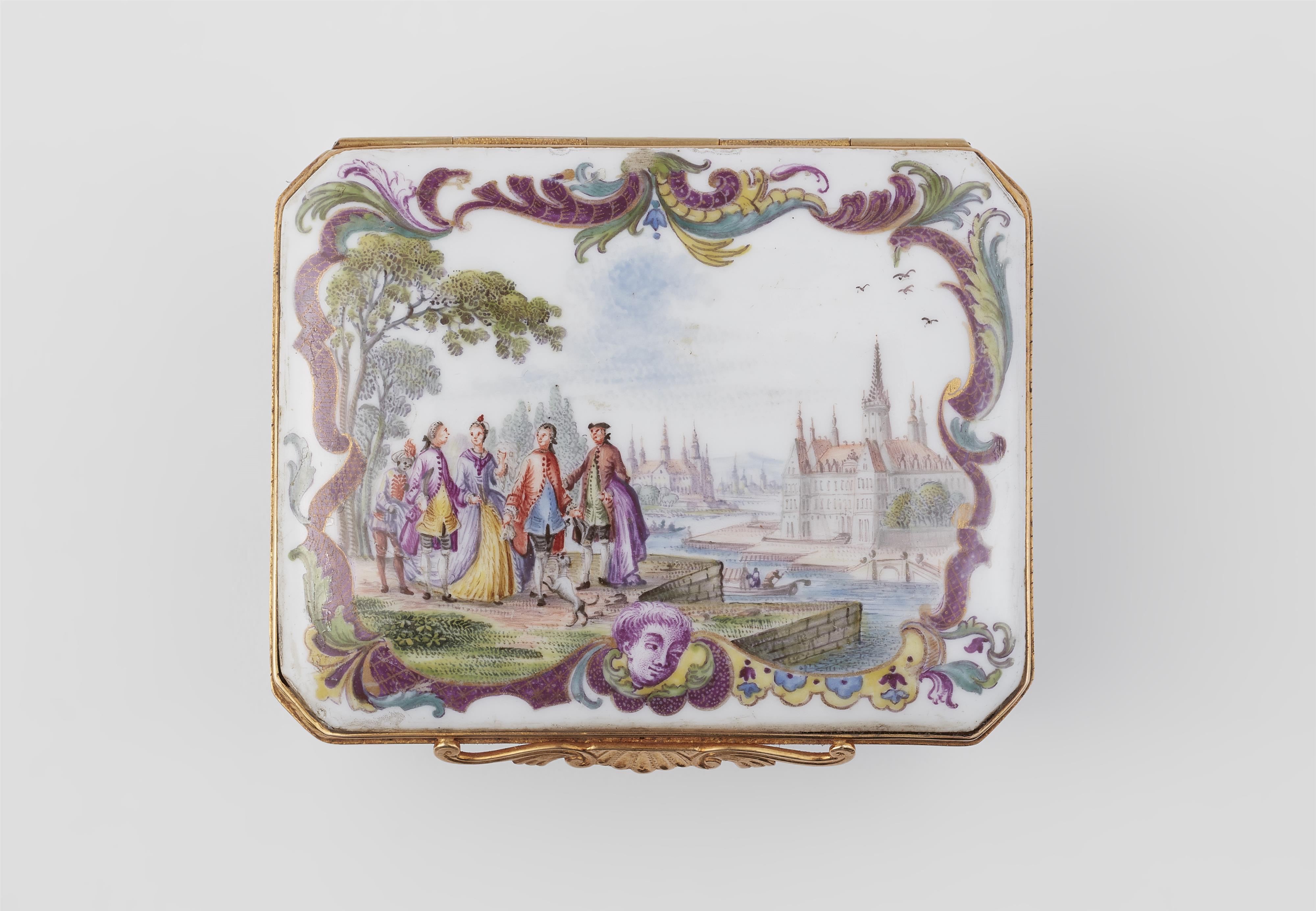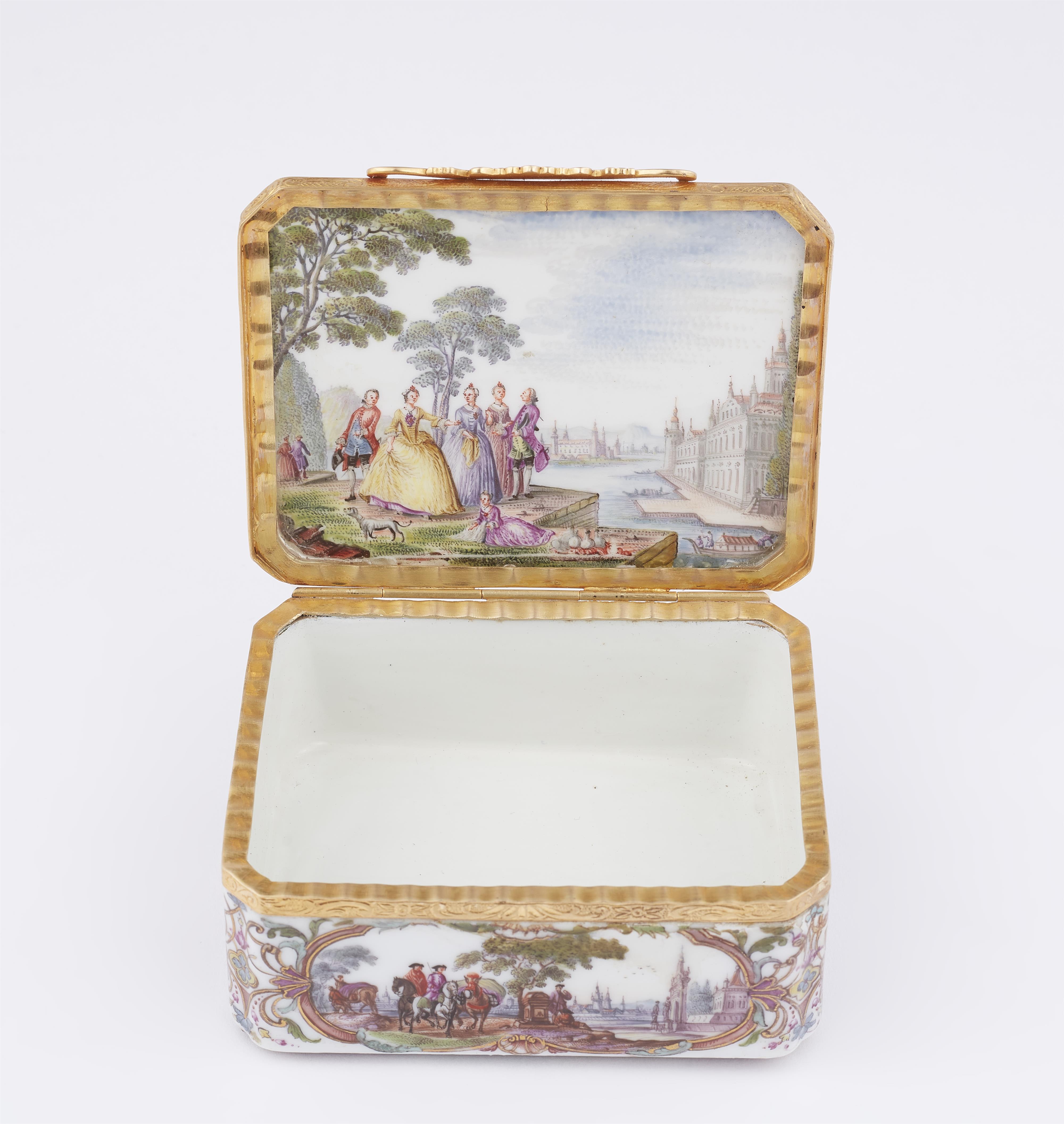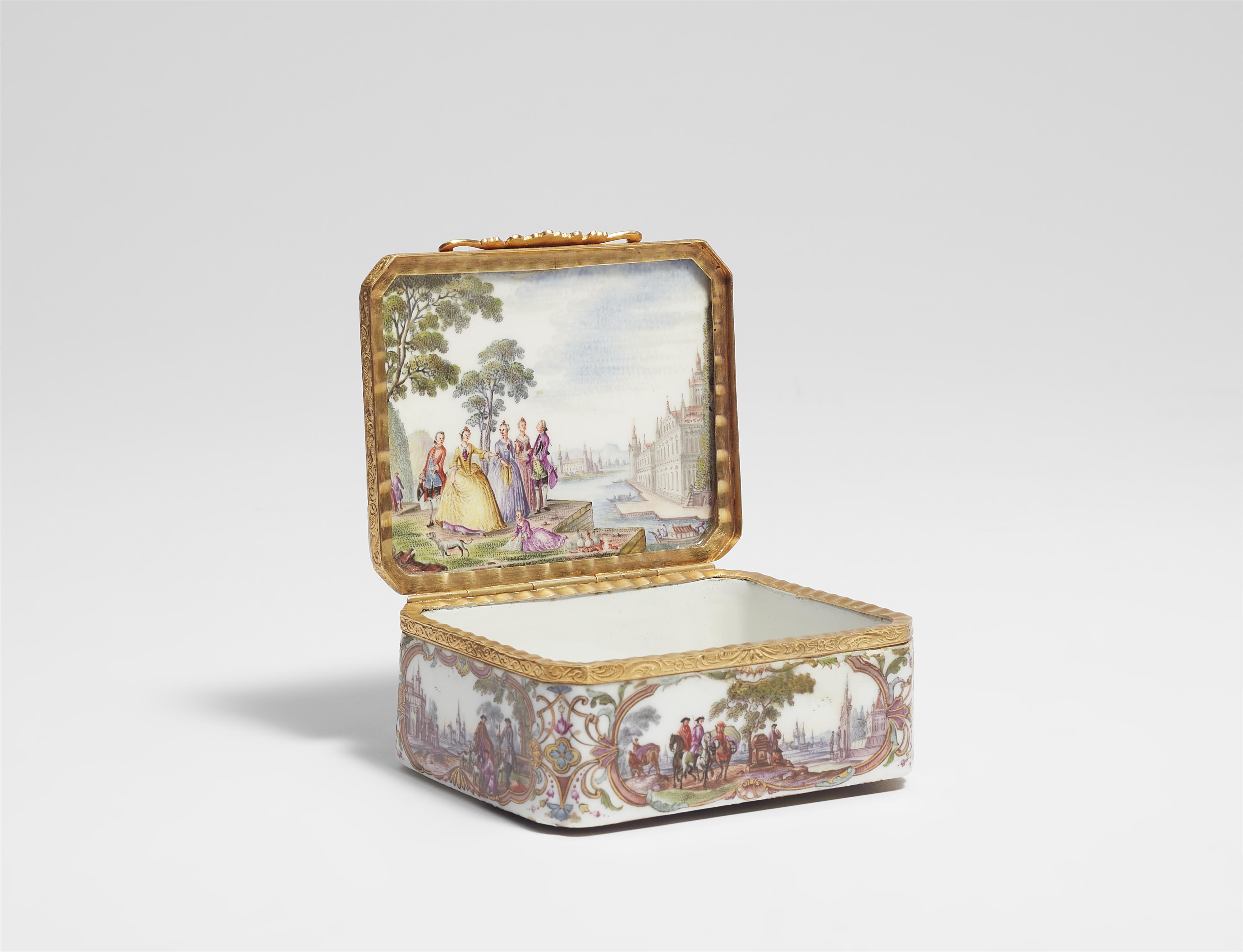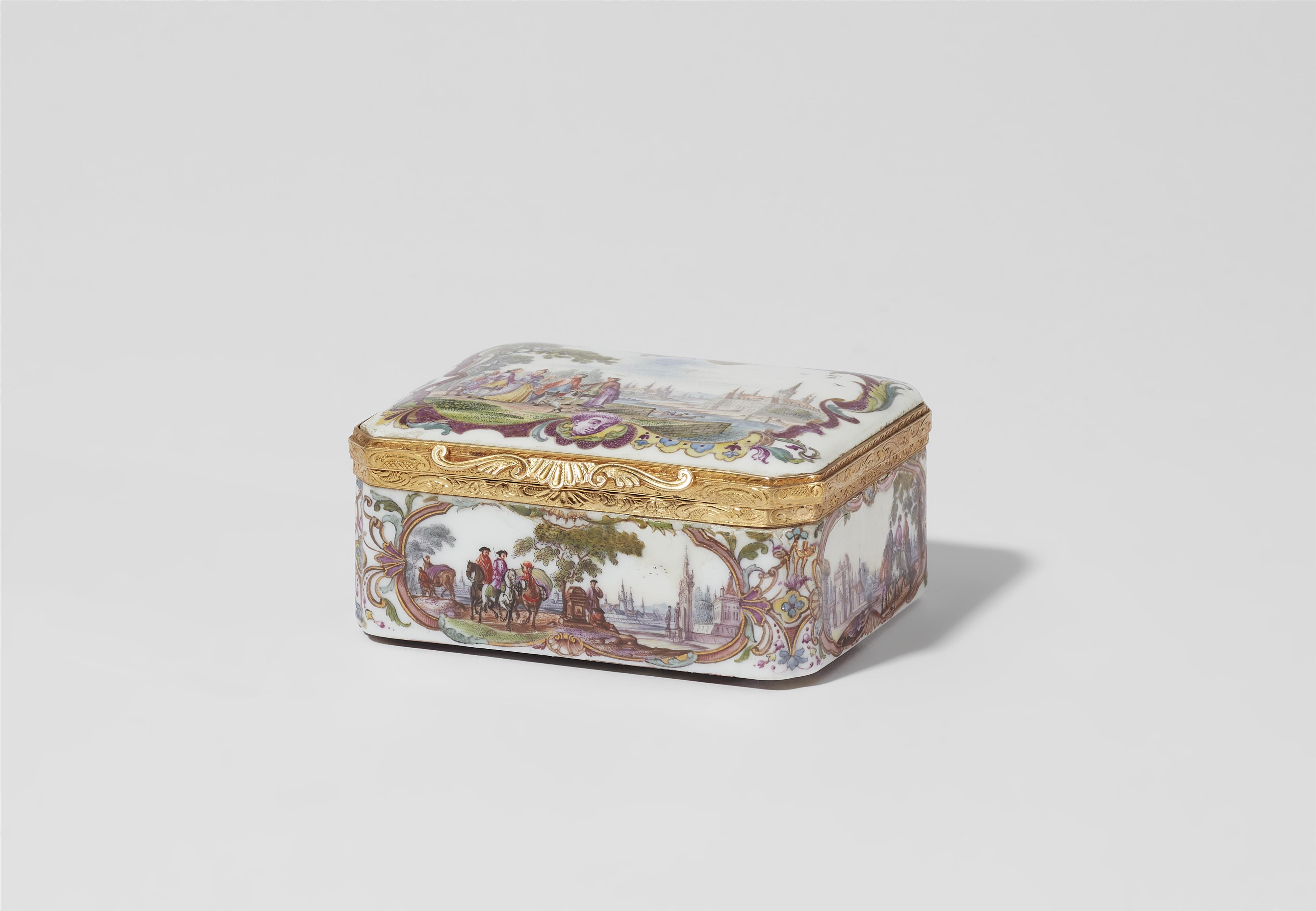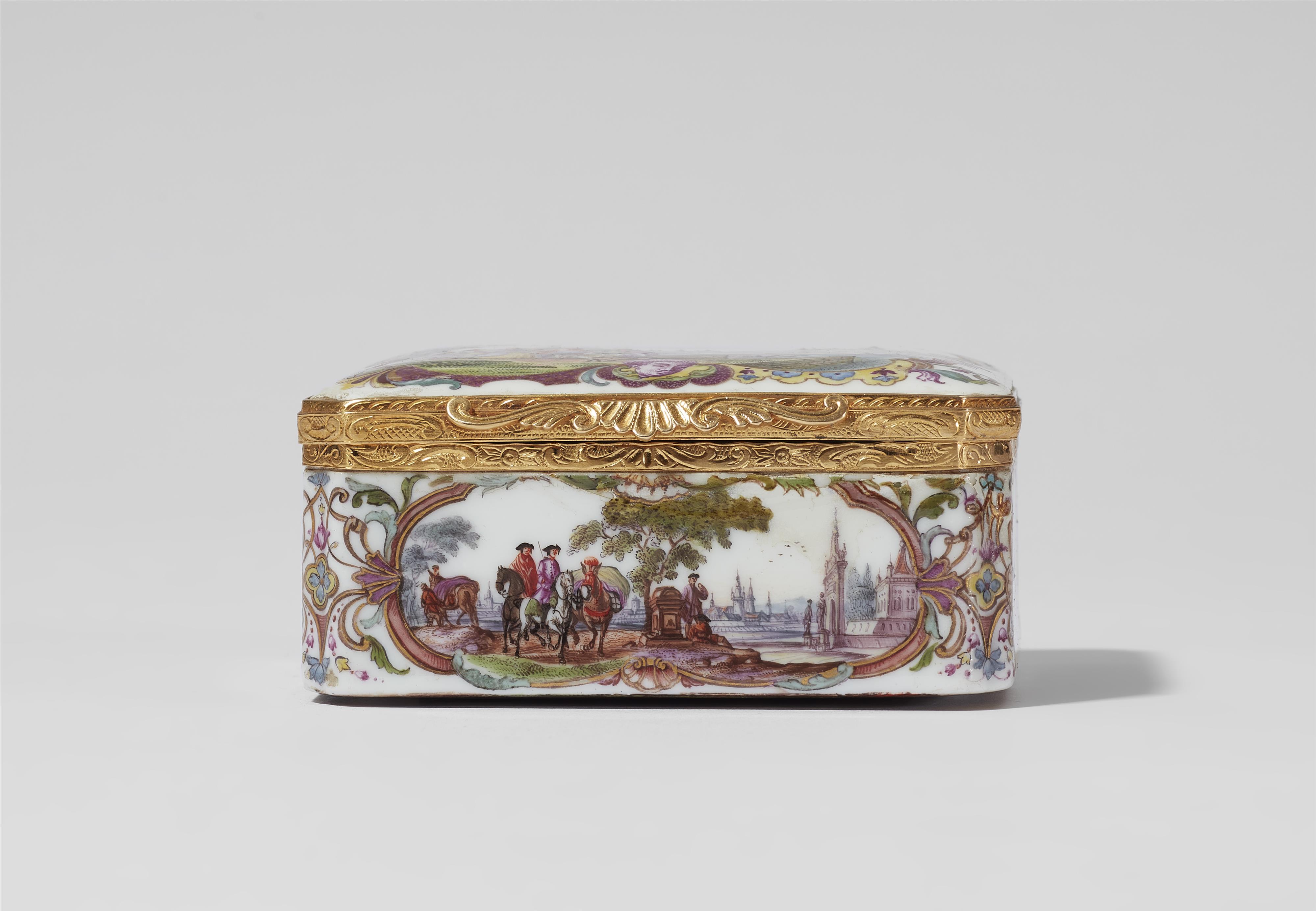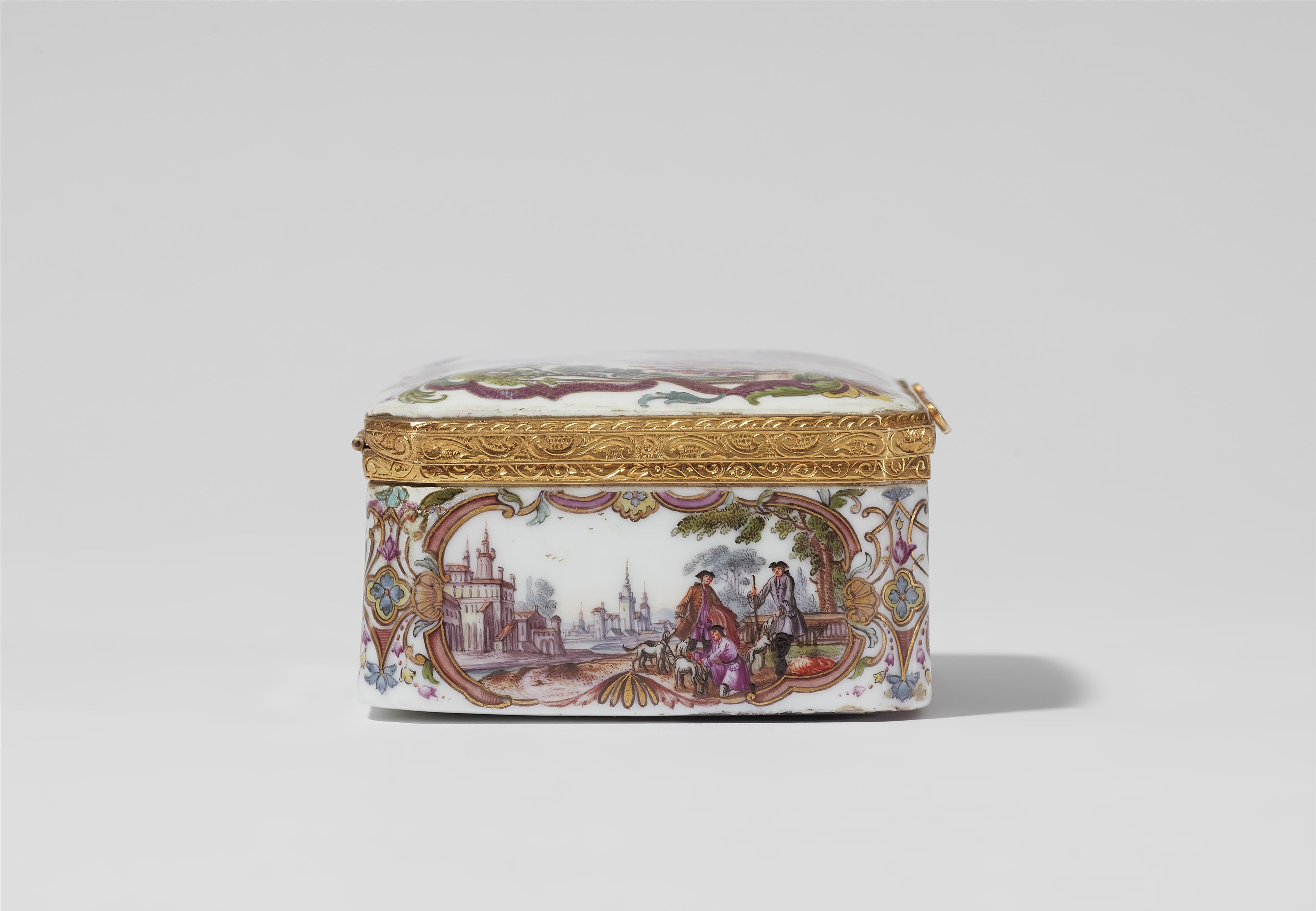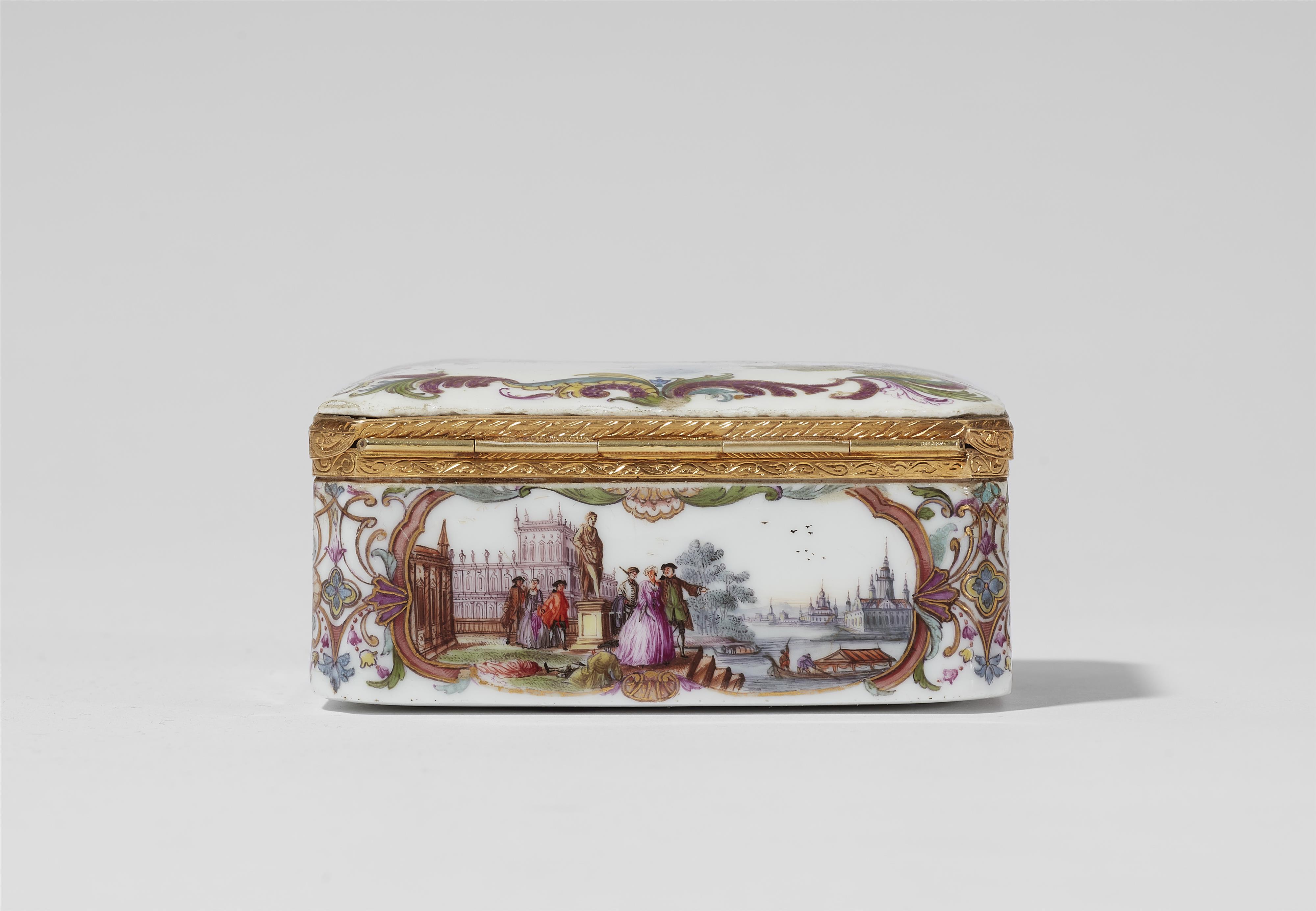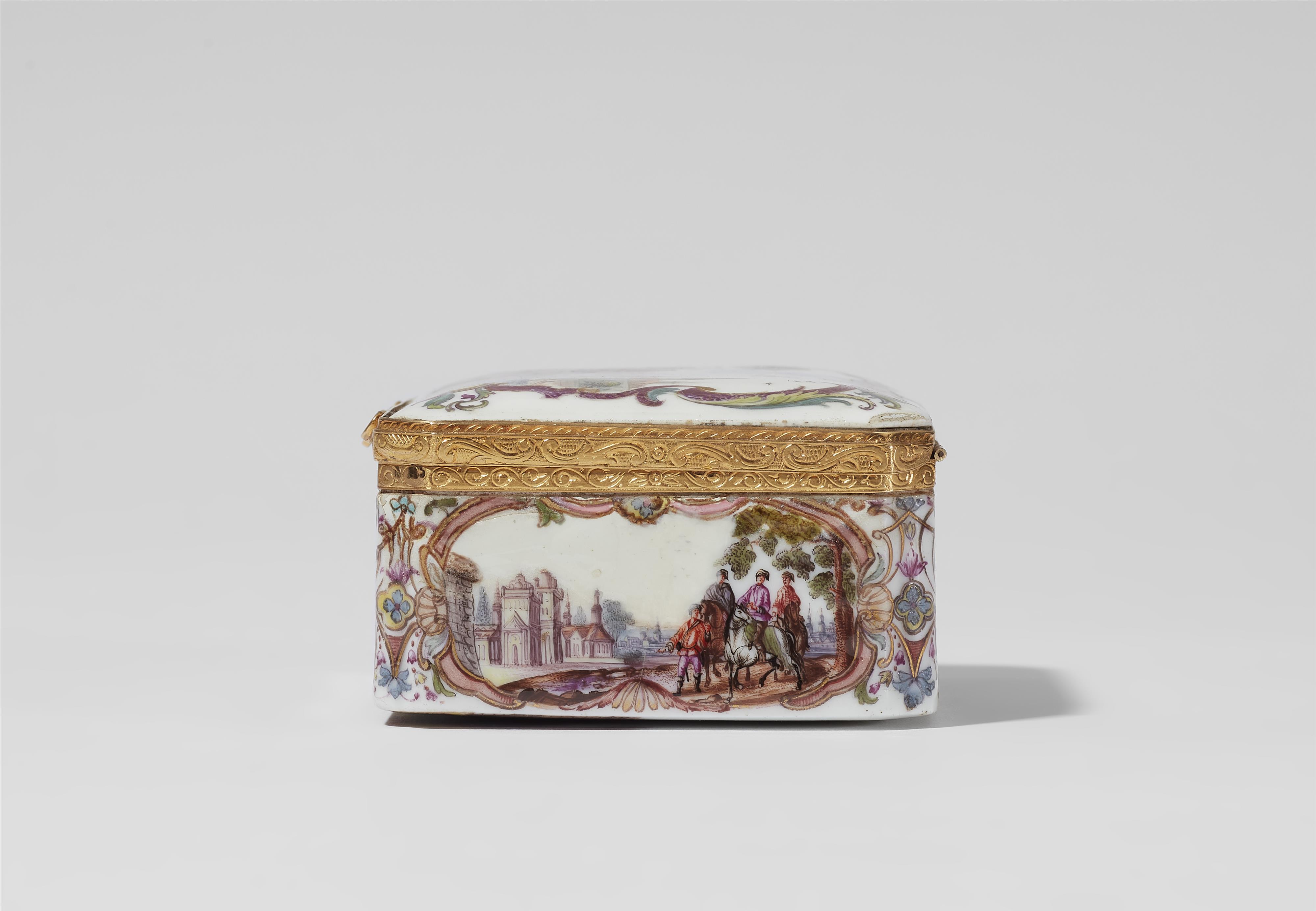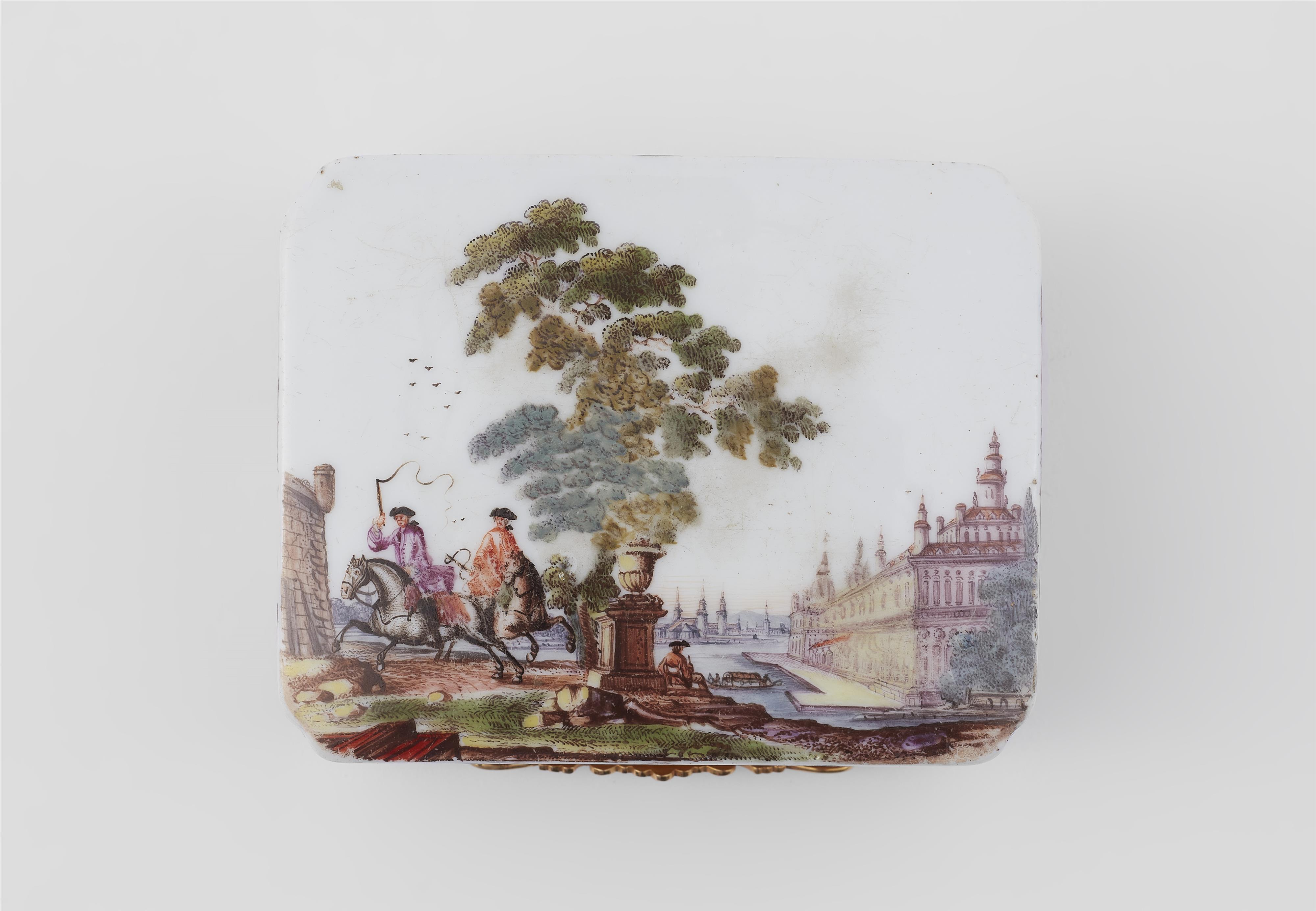A Meissen porcelain snuff box with idealised landscapes
Gold-mounted snuff box decorated with finely painted landscapes populated with numerous tiny figures in tendril and rocaille surrounds. The inside of the lid painted with a similar landscape without the surround. Unmarked. The base restored. H 4.5, W 8.6, D 7.2 cm.
C. 1740, decor attributed to Johann Georg Heintze.
According to Rainer Rückert, Johann George Heintze, who was probably born in Dresden around 1706/07, began his apprenticeship as a painter at the Meissen manufactory on 24th June 1720 and became Hoeroldt's "first boy" after his arrival. From 1731 he was already responsible for fine figures and landscapes. He used a special recipe for his purple and designed fancy gold cartouches, so-called "Zierate". The numerous pieces he produced outside of working hours made him a top earner. In the 1740s he began to expand his repertoire to include military scenes and Watteau style figures, but he also suffered increasingly from gout and other undisclosed illnesses. His relationship with Hoeroldt began to deteriorate, possibly because he was assigned the position of 1st painter or painter's supervisor in competition with the latter in 1745. He was repeatedly accused of painting pieces outside of the manufactory, perhaps by Hoeroldt himself, and was finally condemned for doing so and banished by Heinrich Graf Brühl to the fortress Königstein in 1748, where he continued to be sent porcelain to be painted. In 1750 he managed to escape from Königstein together with Johann Gottlieb Mehlhorn. The two got as far as Prague, where they were arrested and subsequently fled again. From there onwards it is difficult to trace the pair, but they allegedly reached Breslau via Vienna and Holíč. Count Brühl tried to get hold of them again through diplomatic channels. Heintze's last documented address is with "Monsieur Wegely" in Berlin in 1751. Nothing is known about his life after that.
Provenance
German private collection.
Literature
Cf. similar decor on a snuff box illus. in Beaucamp-Markowsky, Porzellandosen des 18. Jahrhunderts, Fribourg/Munich 1985, cat. no. 114.
For this decor cf. Pietsch, Early Meissen Porcelain The Wark Collection, London 2011, no. 475 f.
Cf. also cat. Frühes Meissner Porzellan Kostbarkeiten aus deutschen Privatsammlungen, Munich 1997, no. 63.
For more on Heintze cf. Rückert, Biographische Daten der Meißener Manufakturisten des 18. Jahrhunderts, Munich 1990, p. 155 f.

